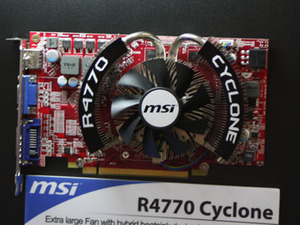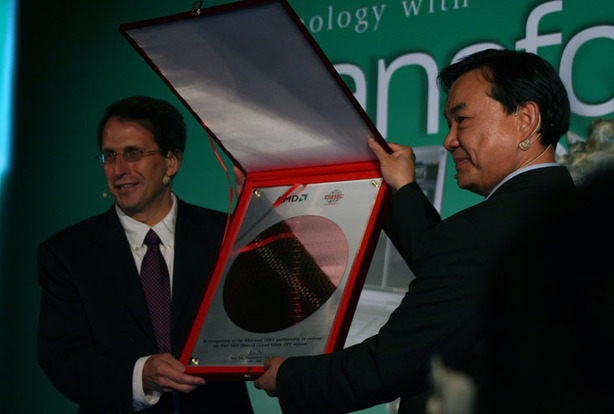
AMD: The RV740 Burden & DirectX 11
The week didn’t start out too well for AMD, as partners continually complained about the lack of RV740 GPUs shipped to them since its launch.Indeed, some sources claimed that AMD had only shipped 40,000 RV740 GPUs since the late April release.
Other sources claimed that the yields had been as low as 20 per cent, but said that TSMC had solved the problems with a remixed 40nm process and that we’d start to see RV740s shipping again in volume at some point in the next few months.
If that wasn’t enough, AMD’s partners went into detail on how the Radeon HD 4770 reference card was quite a bit more robust than the cards that could be purchased from online retailers. “AMD admitted that it was nigh on impossible to meet the price point with the full design,” said one disgruntled source after numerous back-and-forth discussions with AMD.

MSI's Radeon HD 4770 Cyclone
Many partners showed more robust Radeon HD 4770 board designs and better coolers at the show. They explained that the more robust designs would cost more than the cost-cut version AMD shipped – when asked when we can expect these designs to appear, the general response from AMD’s partners was to smile and then say something along the lines of [paraphrased] “when we get some more chips from AMD.”
Partners were much more excited about AMD’s DirectX 11 prospects though – many were keen to point out that AMD would be first to DirectX 11 before the show. The sources said that AMD was “essentially ready” and, sure enough, AMD demoed the world’s first DX11 GPU during its keynote on the second day.
The chip, codenamed Evergreen, was used to demo a number of DirectX 11’s new features, including Tessellation, the Compute Shader and improved texture compression – you can read more about DirectX 11 here. Tessellation was the feature it was most keen to push, as it’s something AMD has been working on – with Microsoft – for at least four or five years, as its first-generation tessellator was included in the Xenos GPU in the Xbox 360.

AMD shows off a wafer full of the world's first DirectX 11 GPUs
Every discrete GPU AMD has made since then has included a tessellation unit, although there is additional functionality in DirectX 11’s implementation. AMD’s Rick Bergman also couldn’t resist a quick but subtle jab at Nvidia’s CUDA technology, saying that applications such as Folding@Home will benefit from a uniform code base.

MSI MPG Velox 100R Chassis Review
October 14 2021 | 15:04








Want to comment? Please log in.